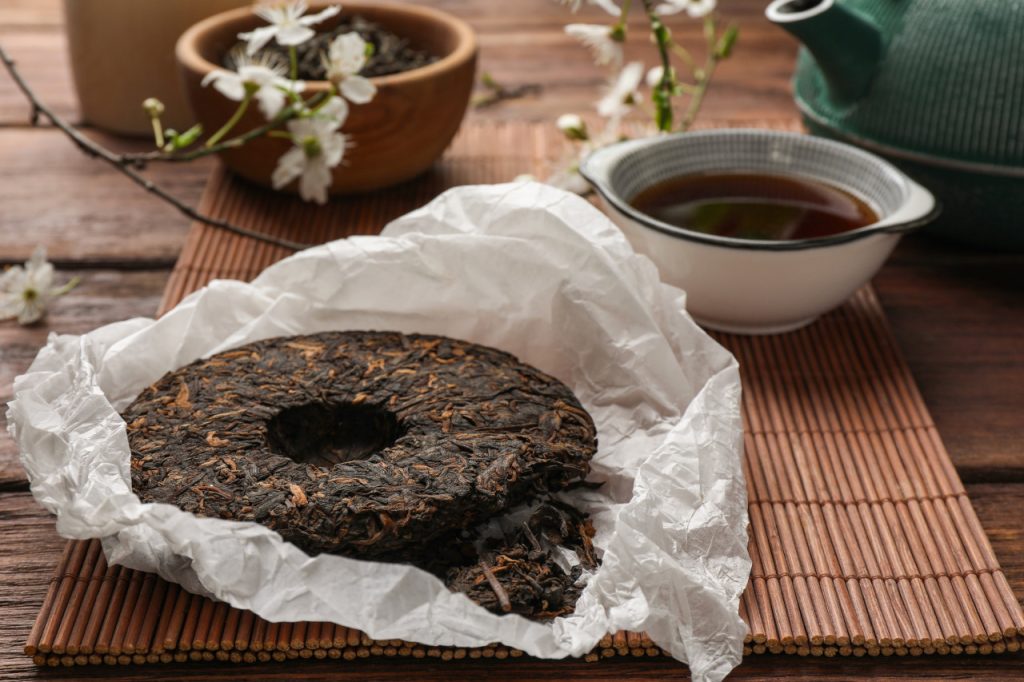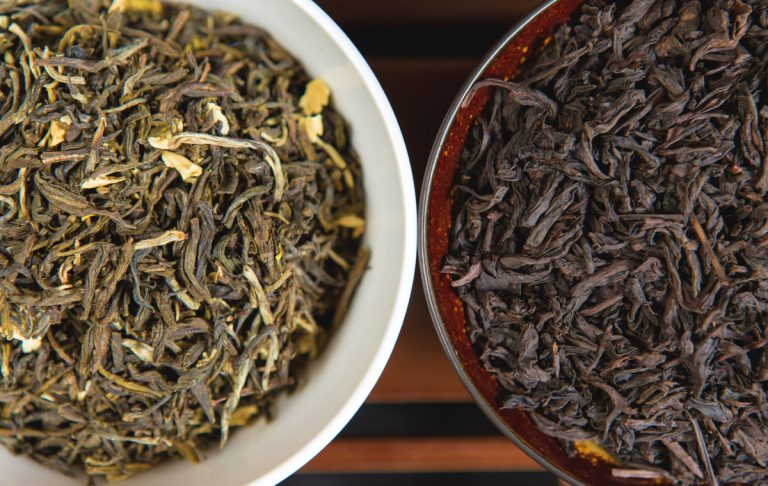Despite a growing number of enthusiasts, pu’er tea is not yet a common find in the West. It is, however, a very popular tea in some regions of China and other regions of the world.
Although this tea can be found in loose-leaf form, it was traditionally compressed into bricks and other shapes in order to make it easier to transport, although the compressed form is thought to have other benefits as well, such as keeping dust and other contaminants out of the tea, as well as altering the aging process.
Pu’er is now a protected trade term, as the Chinese government only allows tea grown in specific regions to be labeled as ‘pu’er’ tea. The tea must also be comprised strictly of the large-leaf assamica tea varietal. Unfortunately, this policy isn’t enforced very well, and therefor, it isn’t uncommon to find non-compliant teas which are labeled as pu’er.
Sheng Pu’er Tea
This type of tea initially starts out with a typically brash, often bitter character, and is probably most similar to green tea. It is then quite often aged over many years, allowing the natural enzymes and bacteria to naturally transform the tea’s flavor profile into something much smoother, and arguably better.

Shou Pu’er Tea
Shou pu’er tea was invented in the 1970’s in an attempt to emulate the natural aging process of sheng pu’er tea in much less time. Although these methods used to be closely guarded industry secrets, the process is now relatively well-known and it turns out that the process actually isn’t that complicated.
It typically involves wetting tea leaves and placing a canvass cloth over top of the tea to create a composting effect. As the water and moisture drains off of the tea, heat is produced within the pile, allowing the natural natural bacteria and enzymes to quickly ferment the tea. The tea pile needs to be turned once in a while in order to evenly ferment the tea. However, not every process or facility holds the same the level of quality. Many tea producers have made improvements to the original process, such as unique methods of air circulation. If the process is done incorrectly or by somebody inexperienced, the resulting tea may have ‘fishy’ or ‘off’ notes.


